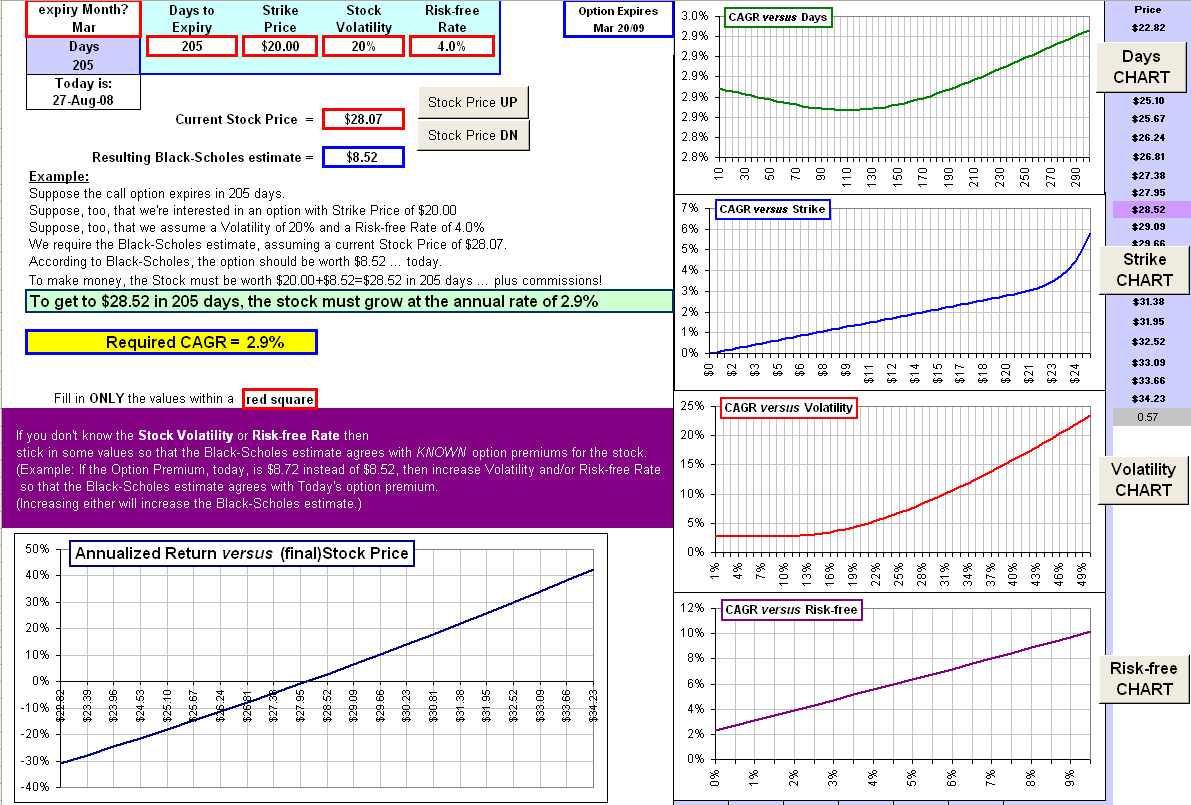| Option things |
I was browsing some old tutorials, especially the ones that ended with this guy 
>Yeah, you got a lot of them. |  |
>So are you back to options ... again?!
Well, just to finish off this tutorial.
Here's the thing:
- You buy a call option for C = $4.06 with strike price K = $25.00. It expires in T = 143 days.
- That gives you the right to buy the stock at $25 any time over the next 143 days.
- If you do excercise the option (buying at $25), then you've paid K + C = $25.00 + $4.06 = $29.06 for each share.
Uh ... yes, but let's ignore the cost of buying and excercising the option.
The point is, you might be asking yourself:
"What are the chances that the stock price will be greater than $29.06 in 143 days?"
>So we're talking probabilities?
We could, but I'd rather ask:
"How rapidly must the stock price increase over the next 143 days in order to reach that magic number: $29.06?"
If we find that the stock must increase at the rate of, say, 50% per year, we might look for other options. 
For example, if the stock price (when you buy the option) is $28.07, then it's got 143 days to get to $$29.06.
That's an increase of (29.06/28.07)(365/143) -1 = 0.0925 or 9.25% on an annualized basis.
>But that's not 50%.
Yes, but if the current stock price were $15.45 then we'd require an annual rate of (29.06/15.45)(365/143) -1 = 0.50 or 50%.
>Does that happen? I mean, a required annual rate of 50%?
Unlikely ... 
Nevertheless, it's interesting to play with this spreadsheet:

>C'mon!! Not another one of those IN PROGRESS signs!!
Well, there's an Explain sheet that says everything: 
 |
